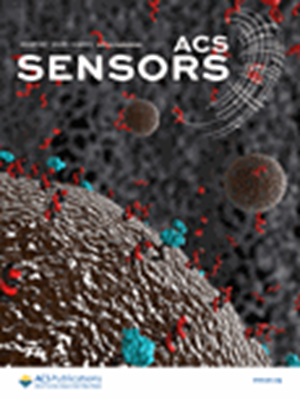Ultrafast Ratiometric Fluorescent Probe and Deep Learning-Assisted On-Site Detection Platform for BAs and Meat Freshness Based on Molecular Engineering
IF 9.1
1区 化学
Q1 CHEMISTRY, ANALYTICAL
引用次数: 0
Abstract
As metabolic byproducts and representative indicators of food spoilage, the monitoring and detection for biogenic amines (BAs) are crucial but challenging for food quality assessment. Here, a strategy is proposed by combining fluorescent probe molecular engineering with a portable detection platform integrating a smartphone and a deep convolutional neural network (DCNN). Four ratiometric fluorescent probes with tunable intramolecular charge transfer (ICT) properties are designed by introducing different electron-withdrawing substituents (−F, −OCH3, −Py, and −CN) to the carbazole. Notably, CNCz exhibits the strongest ICT property and superior sensing performance, with a satisfying detection limit (11 ppb), rapid response (<5 s), and discriminative bathochromic shift (110 nm). Then, a smartphone-based detection platform is fabricated, which enables rapid, visual, and on-site quantitative evaluation of BAs. Furthermore, by integrating DCNN, this platform achieves an impressive 98.5% accuracy in predicting meat freshness. Hereby, this study not only provides a molecular engineering strategy to fine-tune the intrinsic ICT properties to gain high-performance ratiometric fluorescent probes but also presents an intelligent detection platform for BAs and meat freshness with high practical applicability.

基于分子工程的超快速比例荧光探针和深度学习辅助的BAs和肉类新鲜度现场检测平台
生物胺作为食品变质的代谢副产物和代表性指标,在食品质量评价中具有重要意义和挑战性。本文提出了一种将荧光探针分子工程与集成智能手机和深度卷积神经网络(DCNN)的便携式检测平台相结合的策略。通过在咔唑上引入不同的吸电子取代基(- F、- OCH3、- Py和- CN),设计了四种具有可调分子内电荷转移(ICT)性质的比例荧光探针。值得注意的是,CNCz具有最强的ICT特性和优越的传感性能,具有令人满意的检测限(11 ppb),快速响应(<5 s)和判别色移(110 nm)。然后,制作了基于智能手机的检测平台,可以快速,可视化和现场定量评估BAs。此外,通过整合DCNN,该平台在预测肉类新鲜度方面达到了令人印象深刻的98.5%的准确率。因此,本研究不仅提供了一种分子工程策略来微调ICT的固有特性以获得高性能的比例荧光探针,而且还提供了一个具有高实用性的ba和肉类新鲜度的智能检测平台。
本文章由计算机程序翻译,如有差异,请以英文原文为准。
求助全文
约1分钟内获得全文
求助全文
来源期刊

ACS Sensors
Chemical Engineering-Bioengineering
CiteScore
14.50
自引率
3.40%
发文量
372
期刊介绍:
ACS Sensors is a peer-reviewed research journal that focuses on the dissemination of new and original knowledge in the field of sensor science, particularly those that selectively sense chemical or biological species or processes. The journal covers a broad range of topics, including but not limited to biosensors, chemical sensors, gas sensors, intracellular sensors, single molecule sensors, cell chips, and microfluidic devices. It aims to publish articles that address conceptual advances in sensing technology applicable to various types of analytes or application papers that report on the use of existing sensing concepts in new ways or for new analytes.
 求助内容:
求助内容: 应助结果提醒方式:
应助结果提醒方式:


